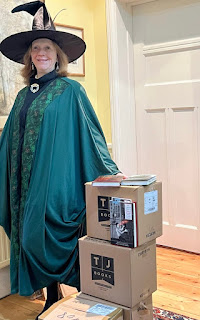Dexter Eat Your Heart Out
A couple of weeks ago I had the great fortune to be pointed in the direction of a free online Introduction
to Forensics course at Strathclyde
University (many thanks
to Chris Longmuir). Without hesitation I enrolled and proceeded to develop a
thin veneer of forensics knowledge, having noticed my deficit when recently
starting to write a murder mystery.
If someone
in your street today tried to commit the perfect murder they would surely fail.
In the old days only Sherlock Holmes, Hercule Poirot, Columbo and Miss Marple
had the honed detective intellect to deduce motive, method, perpetrator, weapon
and time of event from the few scant clues. Nowadays, thanks to the proliferation of
modern entertainment media, we are all experts. True crime documentaries, CSI,
Criminal Minds, Dexter, Sherlock and other TV programmes contribute to the societal knowledge of methods of
murder, criminal profiling and forensics.
We congratulate
ourselves on having already identified the killer before the on-screen characters
manage to do so. A dodgy-looking individual lurks in their van near the
schoolyard, looking at the kids. Kidnapper. A man smoothes his greasy hair,
smiling as he ascends the stairs from the cellar, boning knife in hand. Serial
killer. A woman smiles encouragement at her distraught injured child but drops
the expression when she looks at the camera. Psychopath. The question for the
consumer of these delights is often not who did what, where and when and how,
but rather the why. We know who did it because we’ve been presented with enough
evidence to convict an elephant. What we want to know is why they did what they
did.
Red
herrings are thrown into the fray for viewers to feast upon. The dodgy-looking
individual is there to pick up his kid and just happens to look dodgy by
nature. The greasy-haired man has been preparing some legitimate meat in his
downstairs kitchen. The woman who drops her smile of encouragement is simply
tired by motherhood.
Screenplays
have the luxury of being able to visually present those fake and bona fide clues
to viewers through the actors’ body language, appearance, actions and words.
For a fiction writer things are more subtle. A one second piece of throwaway behaviour
on-screen becomes a string of words when written. The reader can sit and stare
at that sentence for as long as they like – it’s not time-bound.
It could be
argued that all good fiction contains components of suspense – what, who,
where, when, how, why. The reader turns the page to find out the answer to one
or more of these questions. Even the most literary fiction is a study of the
human condition and begs questions about the why.
I recently
watched a TV series called Crocodile
Tears, describing several instances where parents had appeared in the
media, pleading for their children or their children’s killers to be found,
when they had themselves committed the crime. Each case described what had
happened, when and where, and concluded with the who – which we knew already as it
was Crocodile Tears. The series of
programmes was ultimately unsatisfying because it didn’t deliver on how the crimes were perpetrated and why the parents did it. That is often
the case with true crime, whether visual or written. As a fiction writer the challenge
is to maintain the suspense of withholding at least one of the answers but to
eventually deliver on all or most of them.
So, back to
my murder mystery WIP and the ongoing Introduction to Forensics course at
Strathclyde Uni. Principles and practice of crime scene investigation,
fingerprints, DNA (including blood spatter analysis à la Dexter and worst part
of the week – “we will now look at semen”), footwear & toolmarks, firearms, drugs,
silent witness, all wrapped up in a real life case study. All good technical stuff.
Being the possessor of a mind palace
I will store all this great info away and try to apply it in my writing without
getting my DNA in a twist and making the reader choke on the post mortem.
What I have
learned from Strathclyde so far are two very important lessons.
Firstly,
almost everyone (as witnessed in the virtual chat rooms of the course, myself
included) leapt straight into detective mode at the outset, trying to solve the
case rather than observe the facts.
Secondly,
the what-where-when-how-who-why conundrum is the key to successful plotting of a
mystery, to the plotting of almost any fiction. At 25% in, my WIP had already
answered all these crime scene questions for the reader and I was floundering.
Now I know why.



Comments
and I would hope it isn't by real law enforcers...
Anyway, after fingerprint evidence - and the fact that Duggan gave a false address - started to think: drug deal gone wrong?
Now, with the blood spatter evidence, starting to think he done it after all.
Reb, it's open internationally.